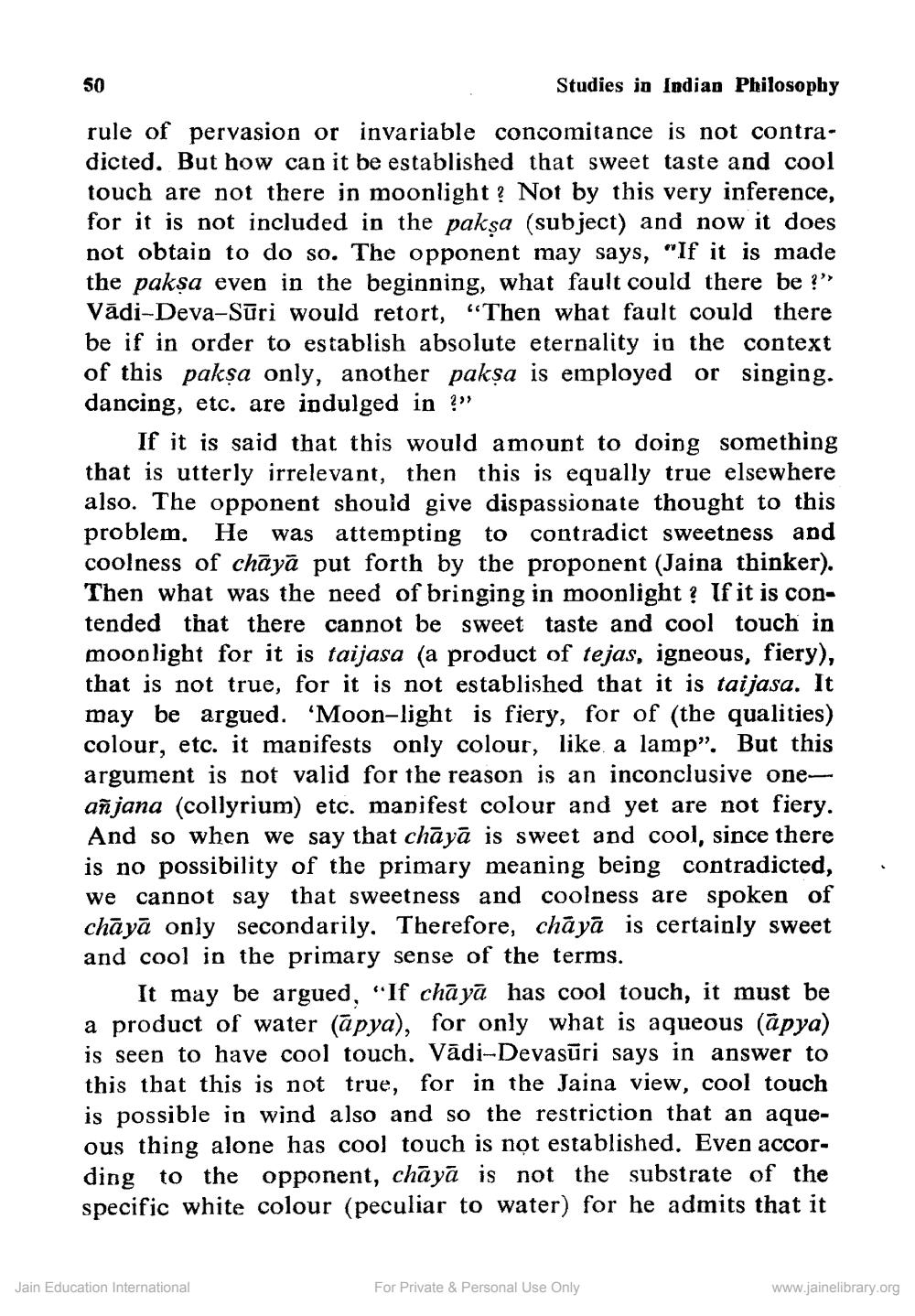________________
Studies in Indian Philosophy
rule of pervasion or invariable concomitance is not contradicted. But how can it be established that sweet taste and cool touch are not there in moonlight ? Not by this very inference, for it is not included in the paksa (subject) and now it does not obtain to do so. The opponent may says, "If it is made the paksa even in the beginning, what fault could there be ?” Vādi-Deva-Sūri would retort, “Then what fault could there be if in order to establish absolute eternality in the context of this paksa only, another paksa is employed or singing. dancing, etc. are indulged in ?"
If it is said that this would amount to doing something that is utterly irrelevant, then this is equally true elsewhere also. The opponent should give dispassionate thought to this problem. He was attempting to contradict sweetness and coolness of chāyā put forth by the proponent (Jaina thinker). Then what was the need of bringing in moonlight ? If it is contended that there cannot be sweet taste and cool touch in moop light for it is taijasa (a product of tejas, igneous, fiery), that is not true, for it is not established that it is taijasa. It may be argued. 'Moon-light is fiery, for of the qualities) colour, etc. it manifests only colour, like a lamp”. But this argument is not valid for the reason is an inconclusive oneañjana (collyrium) etc. manifest colour and yet are not fiery. And so when we say that chāyā is sweet and cool, since there is no possibility of the primary meaning being contradicted, we cannot say that sweetness and coolness are spoken of chāyā only secondarily. Therefore, chāyā is certainly sweet and cool in the primary sense of the terms.
It may be argued, "If chāyā has cool touch, it must be a product of water (āpya), for only what is aqueous (apya) is seen to have cool touch. Vādi-Devasūri says in answer to this that this is not true, for in the Jaina view, cool touch is possible in wind also and so the restriction that an aqueous thing alone has cool touch is not established. Even according to the opponent, chāyā is not the substrate of the specific white colour (peculiar to water) for he admits that it
Jain Education International
For Private & Personal Use Only
www.jainelibrary.org




